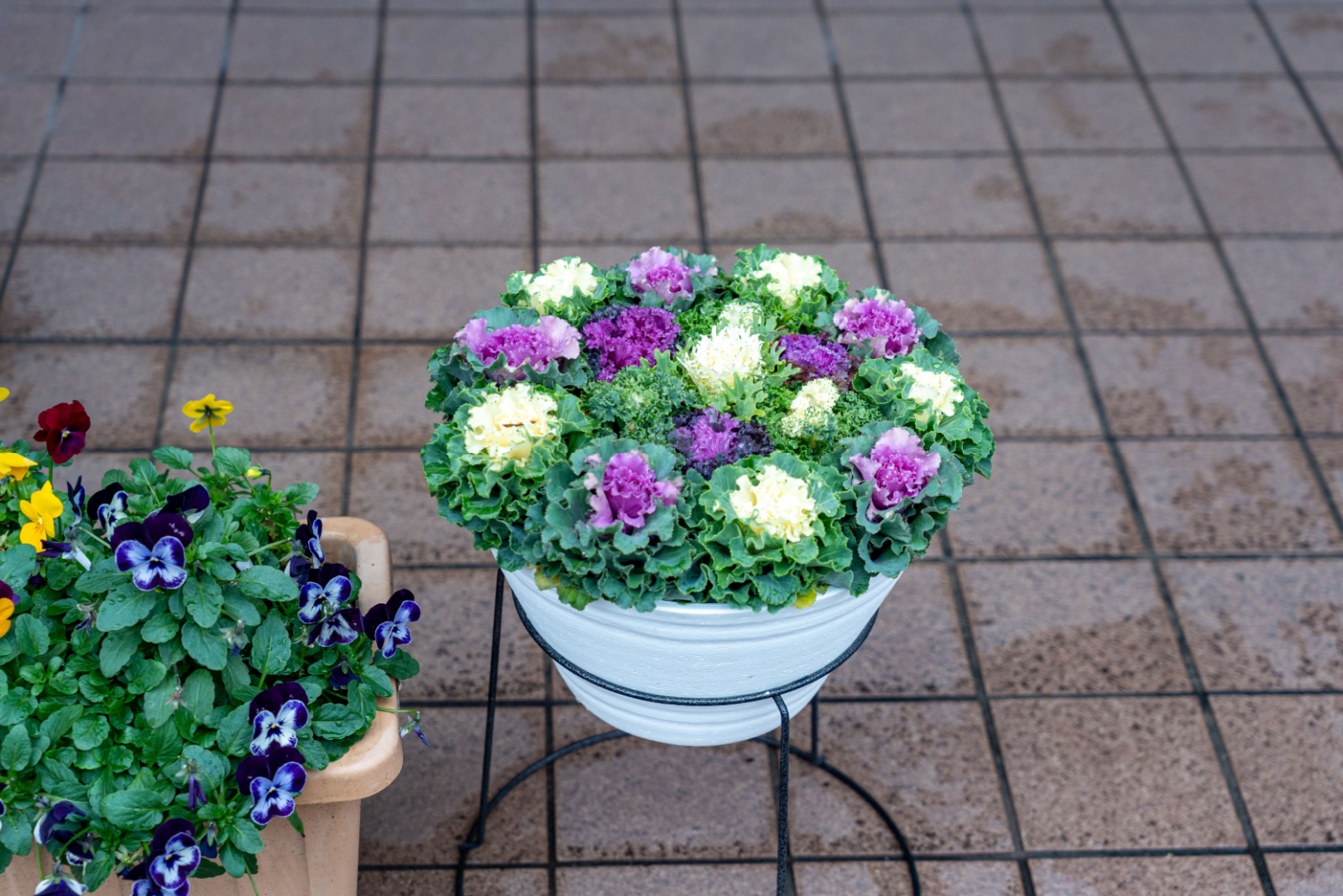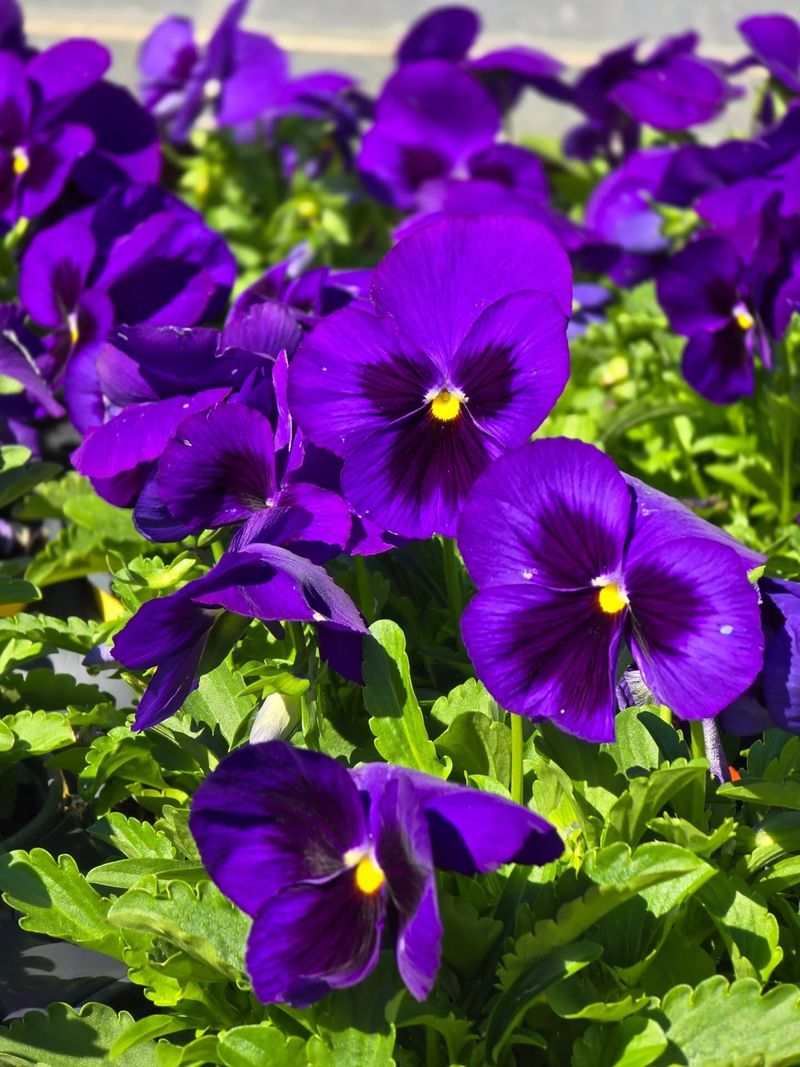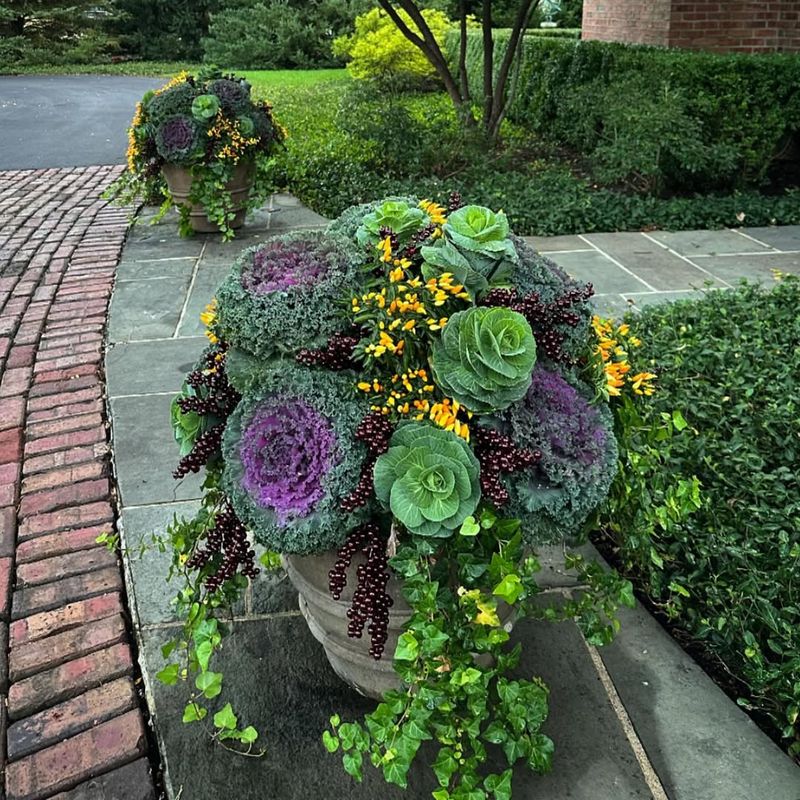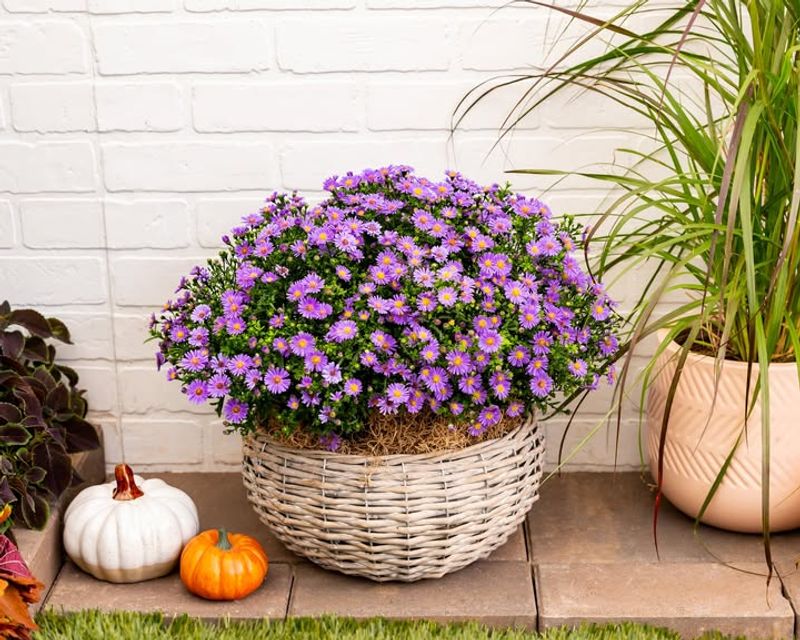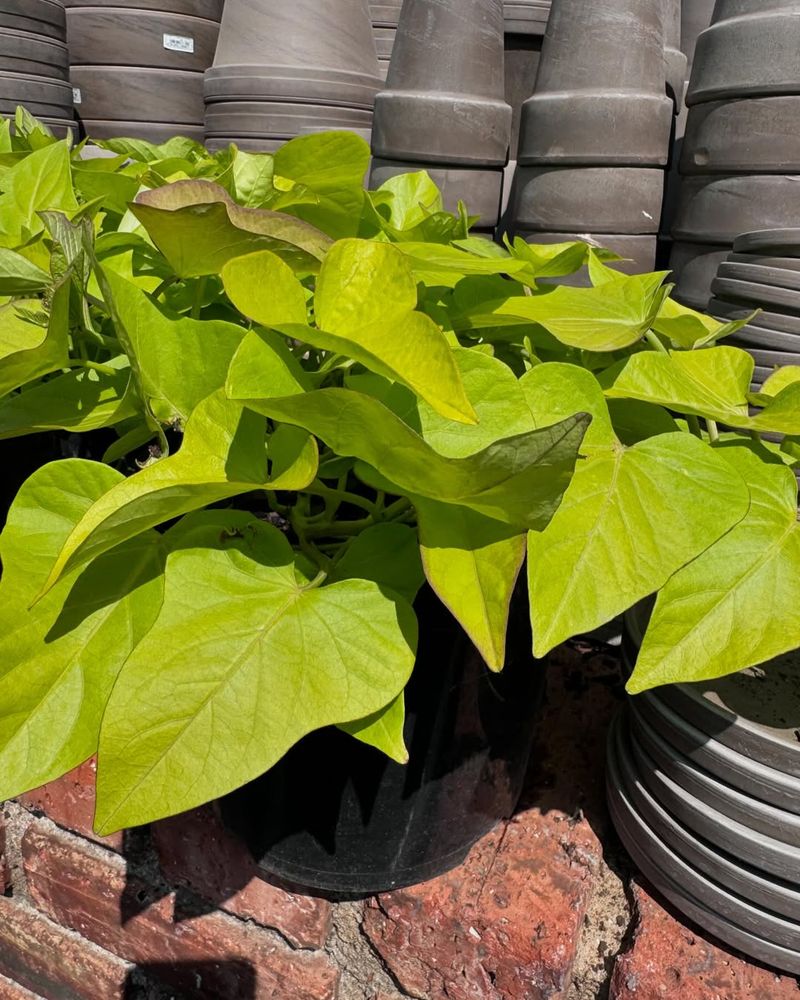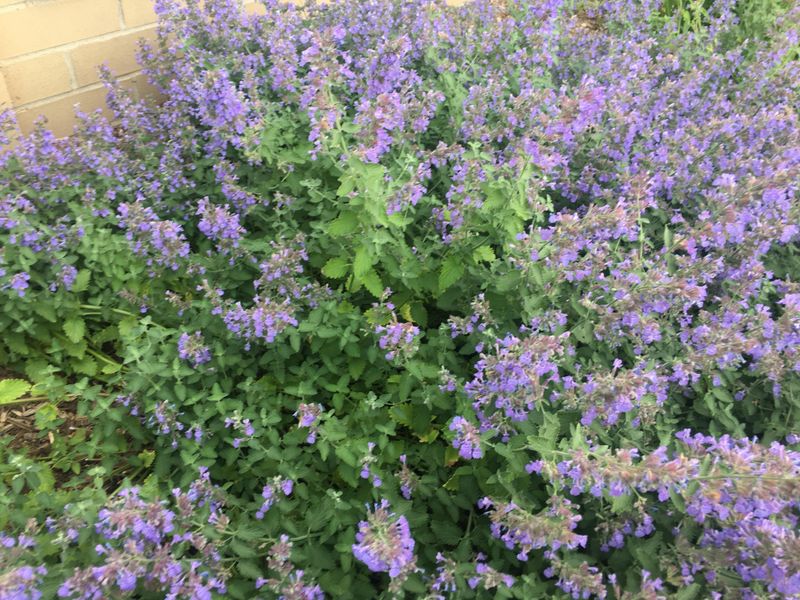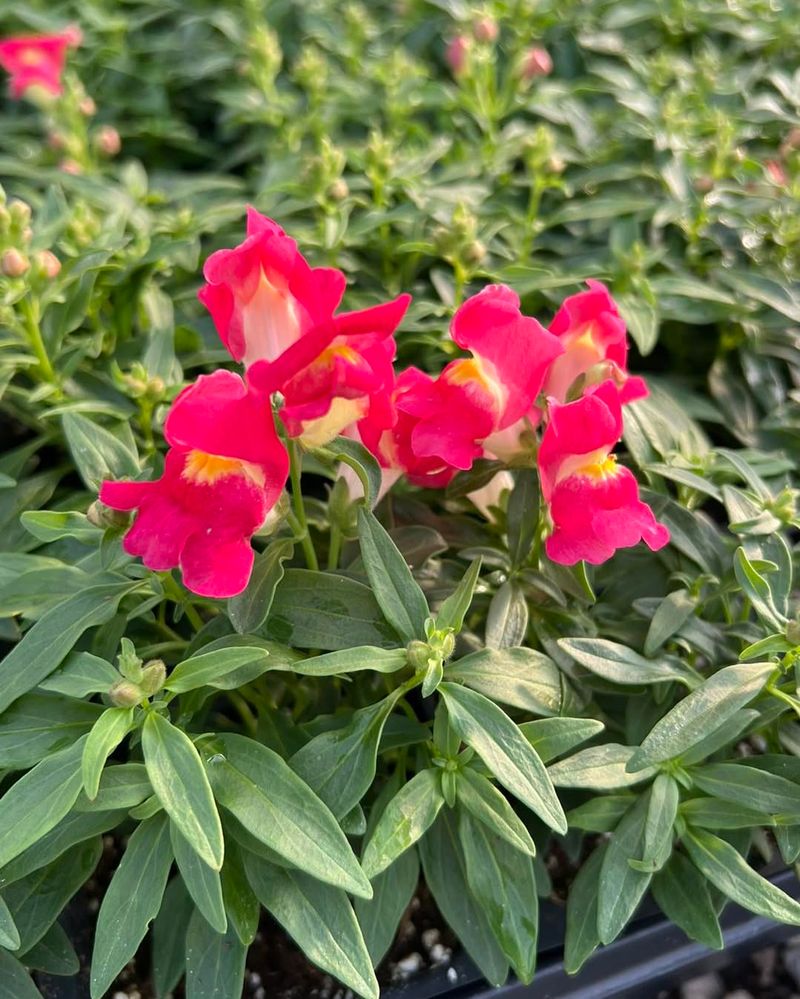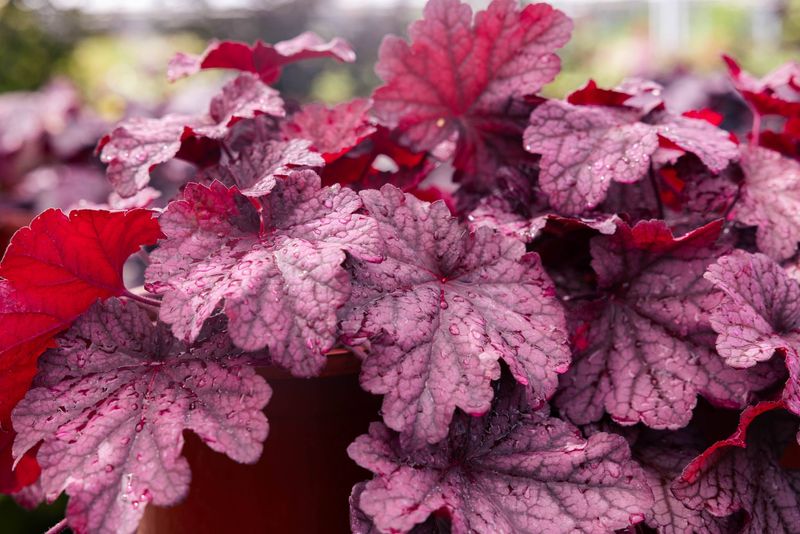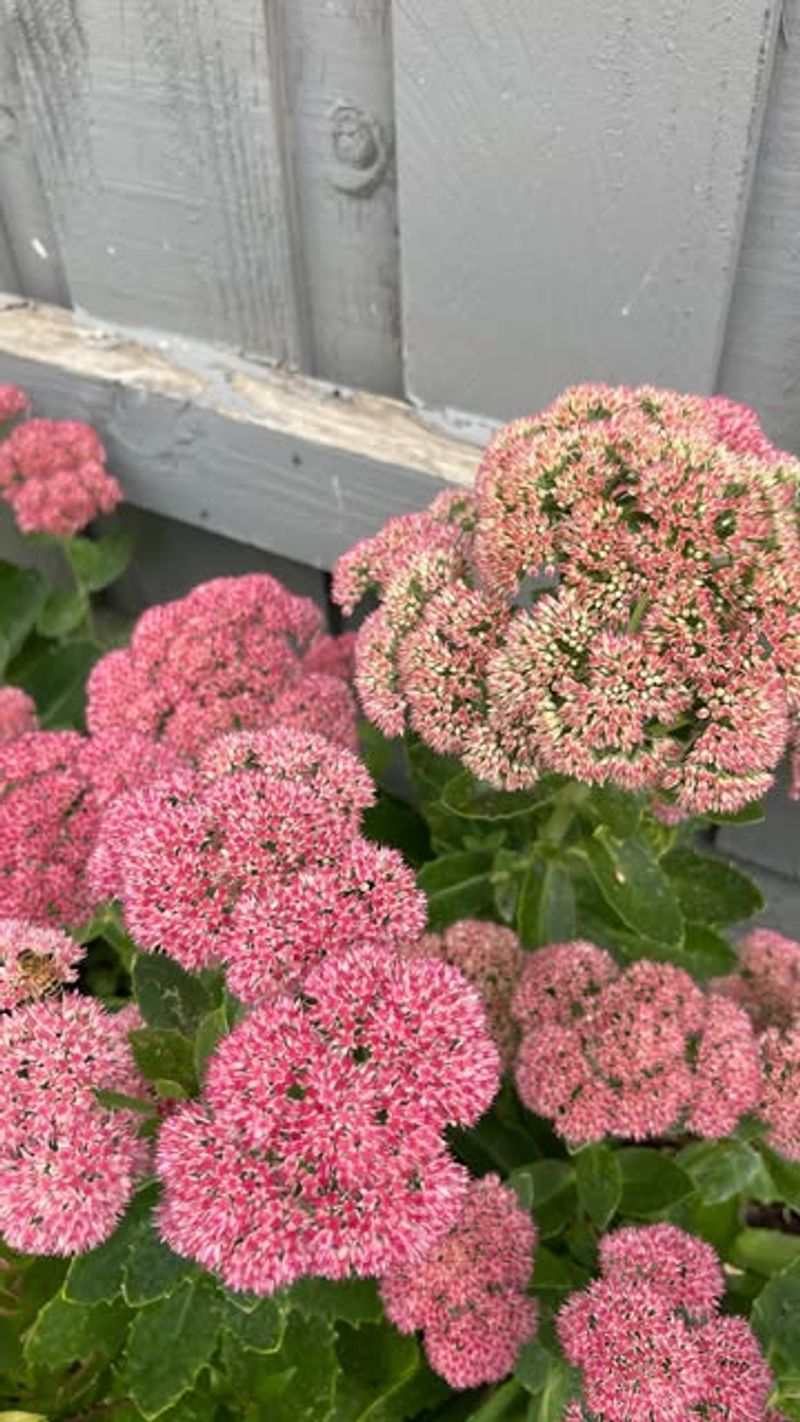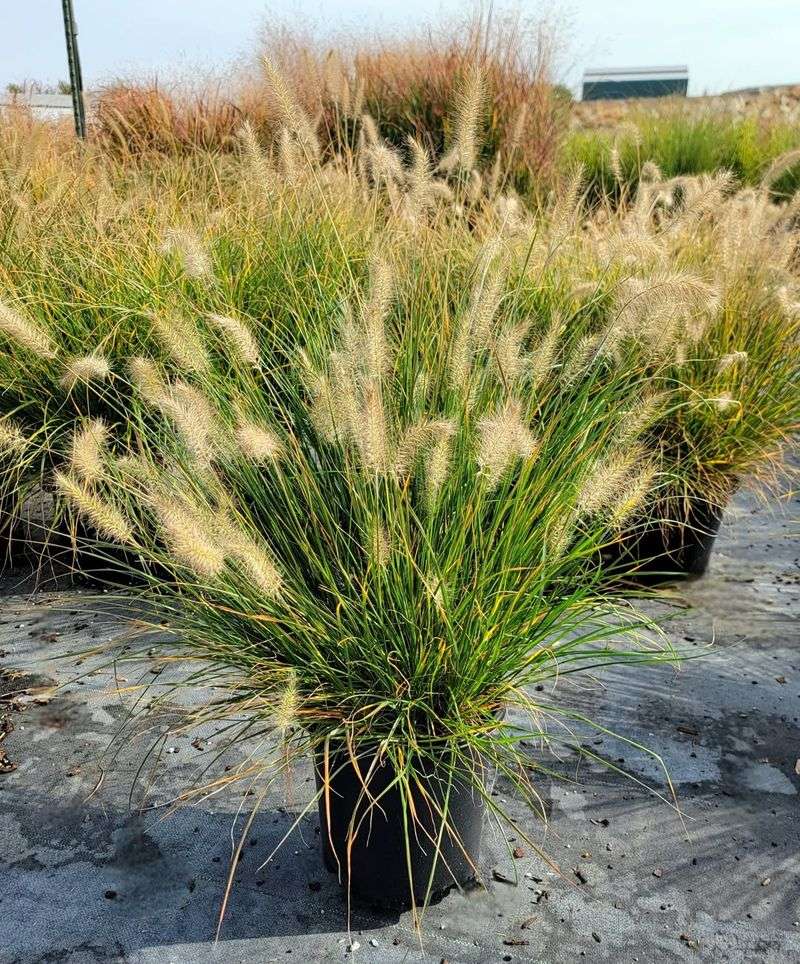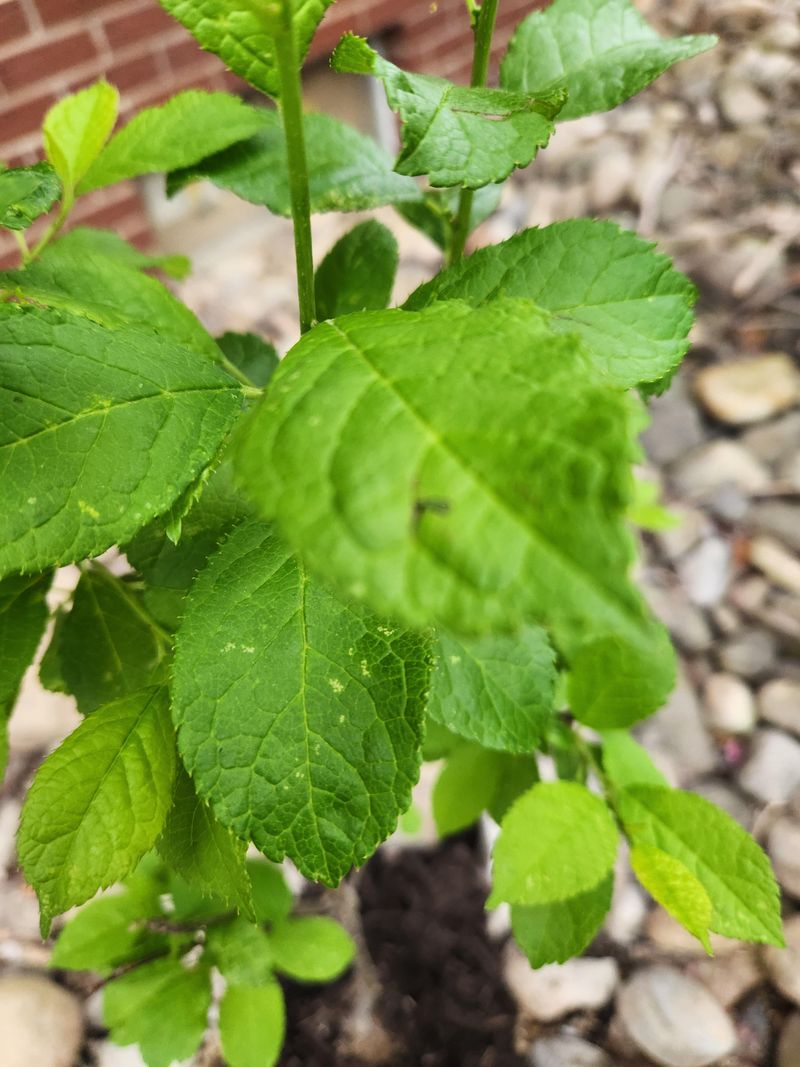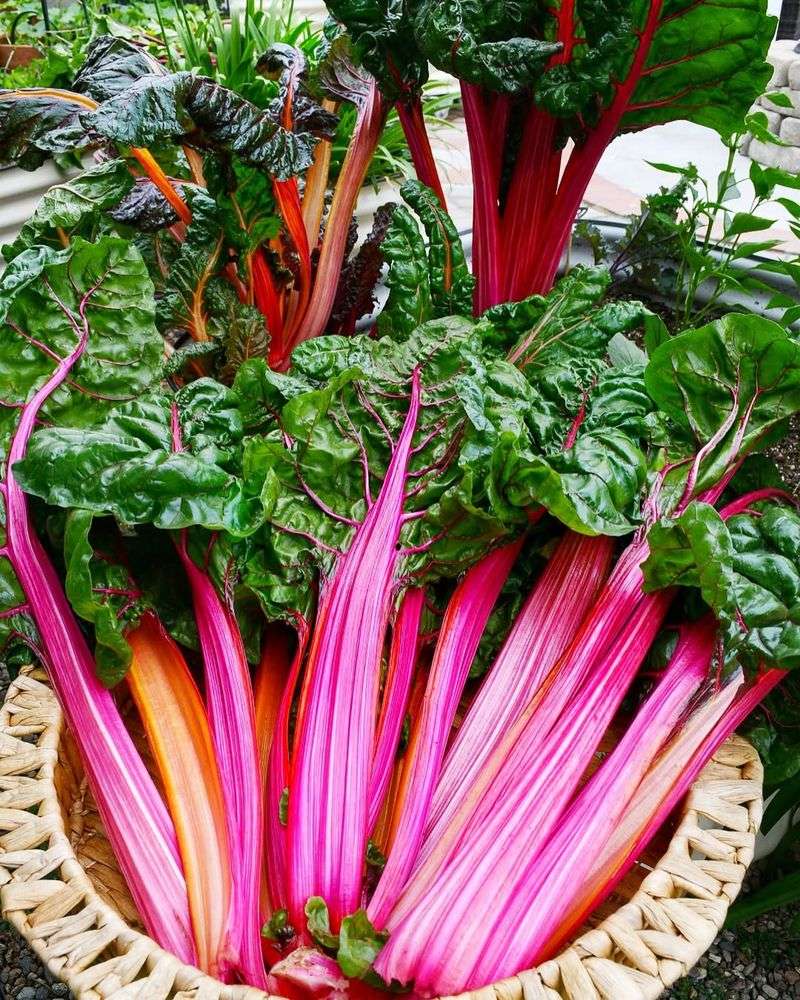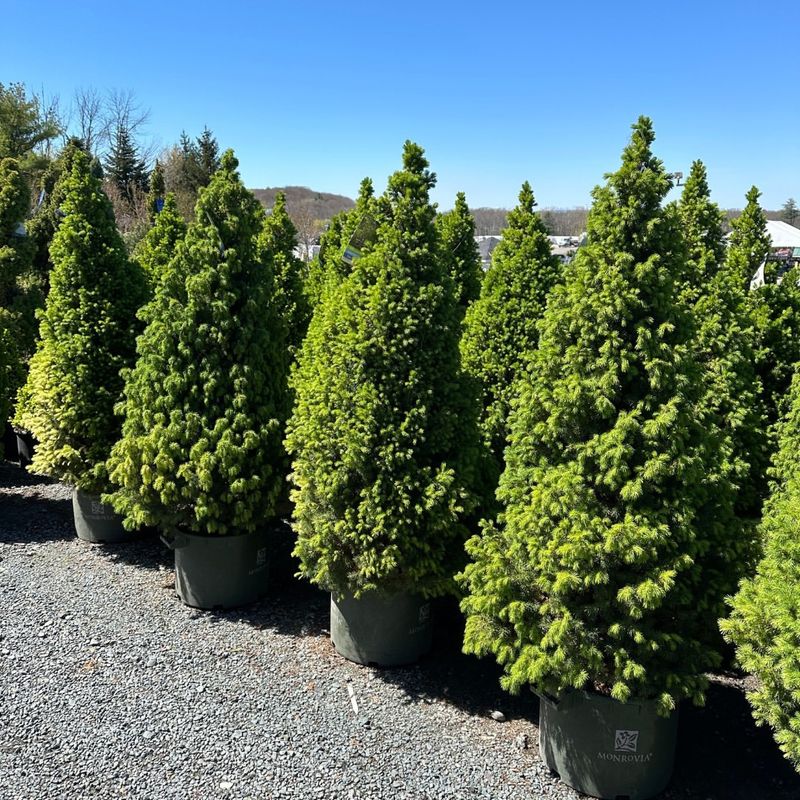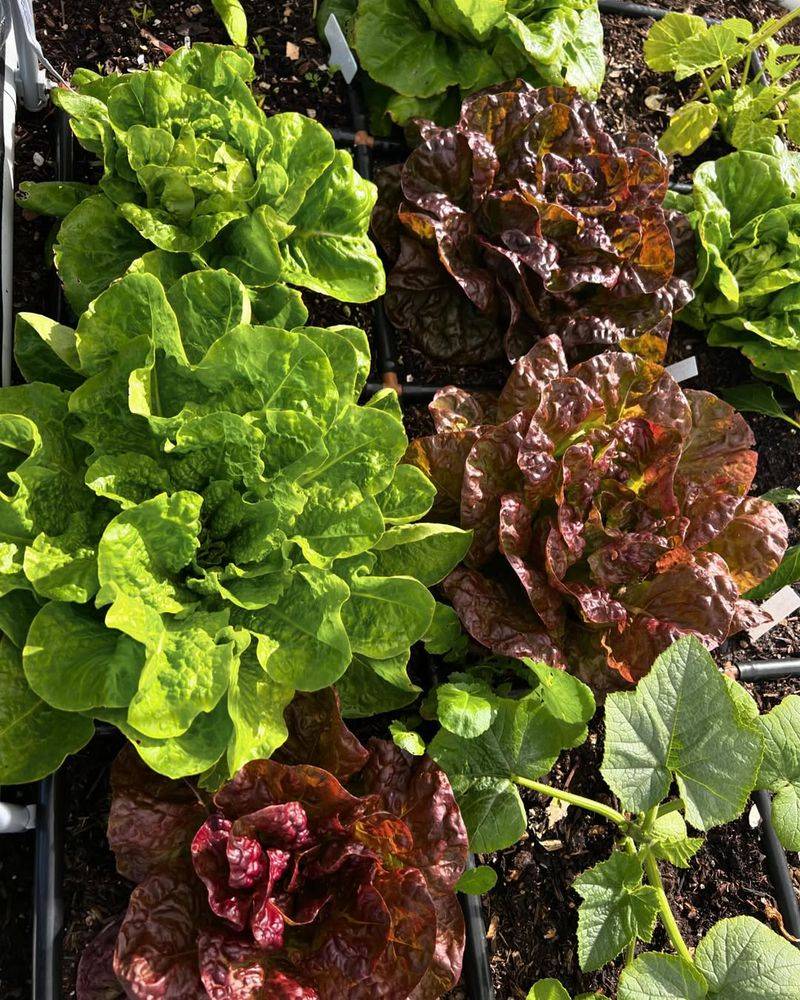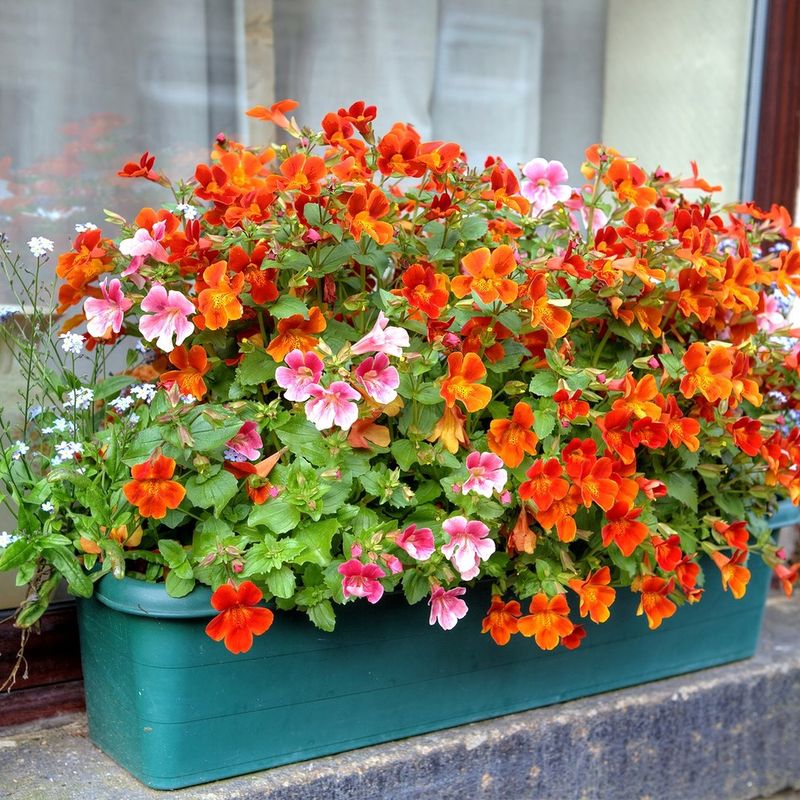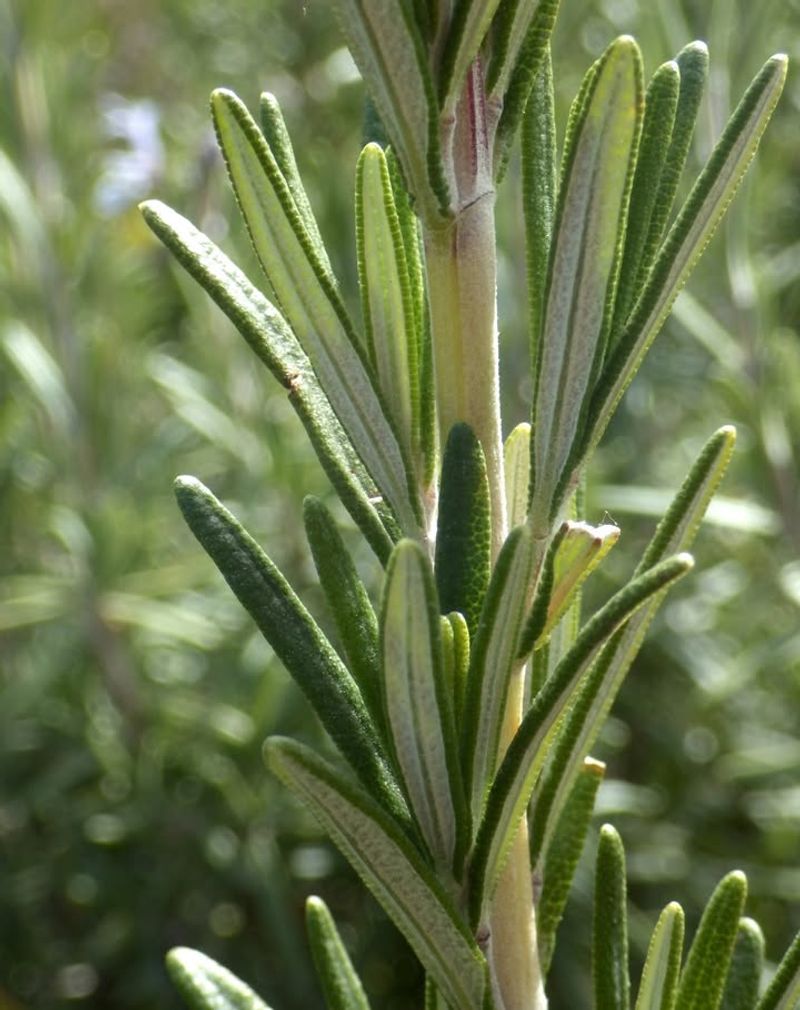Fall in North Carolina brings cooler temperatures and vibrant colors, making it the perfect time to refresh your container garden. Whether you have a small patio, balcony, or porch, potted plants add life and beauty to any outdoor space.
From colorful flowers to tasty vegetables, these container-friendly plants will flourish across our state’s varied climate zones despite autumn’s changing conditions.
1. Purple Pansies
Cold-hardy pansies bring a splash of color when other flowers fade away. Their cheerful faces come in various shades, but purple varieties offer striking contrast against autumn’s oranges and reds.
Plant them in well-draining potting soil and place in partial sun. Pansies actually prefer cooler temperatures, making them perfect for North Carolina’s mild fall season. Water regularly but avoid soaking the soil completely.
2. Ornamental Kale
Looking like colorful cabbage roses, ornamental kale creates instant drama in any fall container. The frilly-edged leaves develop deeper, richer colors as temperatures drop, transforming from green to purple, pink, and white.
Give these showstoppers full to partial sun and consistent moisture. They pair beautifully with other fall plants and can withstand light frosts, continuing to look gorgeous well into winter across most of North Carolina.
3. Dwarf Asters
Star-shaped blooms in purples, pinks, and blues make dwarf asters perfect for smaller containers. Unlike their taller garden cousins, these compact varieties won’t flop over in autumn breezes.
Native to North America, asters attract butterflies and pollinators even as other nectar sources disappear. Plant in full sun and keep soil consistently moist but not waterlogged. Their daisy-like flowers will brighten your space from late summer through mid-fall.
4. Sweet Potato Vine
Cascading dramatically over container edges, sweet potato vine adds striking texture and movement to fall arrangements. Available in lime green, purple, or bronze, these trailing plants complement almost any container combination.
Though not frost-hardy, they’ll thrive until the first hard freeze. Place in partial sun and water when the top inch of soil feels dry. For extra interest, combine different colored varieties in the same pot for a multi-toned waterfall effect.
5. Russian Sage
Airy spikes of lavender-blue flowers atop silver-gray foliage make Russian sage a standout in autumn containers. The aromatic leaves release a pleasant scent when brushed against, adding a sensory element to your patio or deck.
Choose dwarf varieties like ‘Little Spire’ for containers. This drought-tolerant perennial loves full sun and well-draining soil. The wispy texture contrasts beautifully with bolder plants, creating depth and interest in your fall display.
6. Fall Snapdragons
Many gardeners don’t realize snapdragons actually prefer cooler weather! Fall-planted snapdragons often outperform their spring counterparts in North Carolina’s climate, producing abundant spikes of colorful blooms.
Choose shorter varieties for containers to prevent toppling. Plant in full sun to light shade and keep soil consistently moist. Their unique flower shape and range of colors from pastels to vibrant hues make them perfect for adding vertical interest to autumn pot arrangements.
7. Coral Bells (Heuchera)
Grown primarily for their stunning foliage, coral bells offer season-long color without relying on flowers. Modern varieties come in amazing colors—burgundy, caramel, silver, purple—that intensify as temperatures cool.
These shade-tolerant perennials thrive in containers with well-draining soil. Water when the top inch feels dry, avoiding overhead watering which can damage leaves. Their compact size and cold hardiness make them ideal for North Carolina fall and winter container gardens.
8. Autumn Joy Sedum
Succulent stems topped with flat clusters of star-shaped flowers make ‘Autumn Joy’ sedum a fall container superstar. The blooms transform from pale pink to rusty red as the season progresses, creating an evolving display.
Virtually indestructible, these drought-tolerant plants need minimal care. Plant in full sun and well-draining soil, watering sparingly. Even after frost, the dried flower heads provide winter interest and can be left standing until spring in North Carolina’s mild climate.
9. Dwarf Fountain Grass
Graceful arching blades topped with fuzzy, bottle-brush plumes create movement and texture in fall containers. Dwarf varieties like ‘Hameln’ or ‘Little Bunny’ stay compact enough for pots while still delivering dramatic effect.
The tan seed heads catch morning dew and sparkle in autumn sunlight. Plant in full sun and well-draining soil. This low-maintenance grass tolerates North Carolina’s varied conditions and continues to look attractive even after frost, providing winter interest long after other plants fade.
10. Winterberry Holly
Brilliant red berries against bare branches make winterberry holly a showstopping container specimen for late fall and winter. Unlike other hollies, this native deciduous shrub drops its leaves, making the colorful berries even more dramatic.
Dwarf varieties work well in larger containers. Place in full sun to partial shade and keep soil consistently moist. For berry production, you’ll need both male and female plants, though in containers you can simply choose a female plant with berries already forming.
11. Swiss Chard ‘Bright Lights’
Edible and ornamental, ‘Bright Lights’ Swiss chard features stems in gold, pink, orange, and red topped with glossy green leaves. This nutritional powerhouse doubles as a stunning container plant, providing both food and beauty.
Plant in full sun to partial shade and keep soil consistently moist. You can harvest outer leaves throughout fall while maintaining the plant’s attractive appearance. Swiss chard can withstand light frosts, making it perfect for North Carolina’s extended growing season.
12. Dwarf Alberta Spruce
Perfectly cone-shaped and densely branched, dwarf Alberta spruce creates an elegant focal point in fall and winter containers. The bright green needles provide welcome color when deciduous plants go dormant.
Growing just a few inches per year, these miniature evergreens stay container-appropriate for many seasons. Place in full to partial sun and water when the top inch of soil feels dry. Their classic Christmas tree shape makes them ideal for holiday decorating across North Carolina.
13. Fall Lettuces
Leafy greens thrive in North Carolina’s cooling autumn temperatures, making fall the perfect time for container lettuce gardens. Mix varieties like oak leaf, romaine, and red-tinged loose-leaf for a beautiful edible display.
Plant in partial shade as fall progresses to prevent bolting. Keep soil consistently moist but not soggy. Harvest outer leaves as needed while plants continue growing. The varied textures and colors create an attractive container that doubles as a convenient salad bar right outside your door.
14. Nemesia
Often overlooked for fall planting, nemesia produces masses of small, orchid-like blooms in white, pink, purple, or bicolor patterns. These cool-weather performers rebound beautifully when summer heat subsides.
Plant in full sun to light shade and well-draining soil. Their compact growth habit makes them perfect for container edges or small pots. With deadheading, they’ll continue flowering until hard frost, providing late-season color and attracting the last butterflies of the year across North Carolina.
15. Rosemary
Aromatic and evergreen, rosemary transitions perfectly from practical herb to ornamental container plant in fall. The needle-like foliage and subtle blue flowers add texture and fragrance to autumn arrangements.
Choose upright or trailing varieties depending on your container design. Plant in full sun and well-draining soil, allowing the top inch to dry between waterings. Hardy throughout most of North Carolina, potted rosemary can be moved to protected areas during occasional hard freezes.

